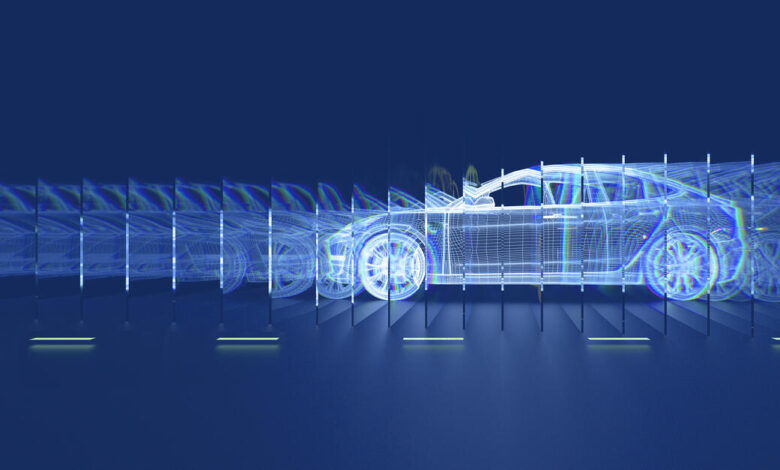The Impact of Car Animation on Automotive Design

Hello there, fellow automotive and animation enthusiasts! Today, we’re going to dive into the exhilarating universe of car animation, a realm where the rubber meets the road in more ways than one. From the sleek contours of a sports car zipping through a neon-drenched cityscape to the gritty detail of an automotive engine animation, the world of car animation offers endless possibilities for creativity, storytelling, and technical innovation.
The Magic of Car Animation: A Journey Through Styles and Techniques
Car animation, much like the automotive industry itself, is characterized by its diversity and evolution. Whether through the nostalgic charm of 2d car animation or the immersive realism of 3d car animation, this art form captivates audiences of all ages. But what makes it so compelling? Let’s buckle up and find out.
The Allure of 2D Car Animation
- A Nostalgic Ride: There’s something undeniably charming about 2D car animation. Its hand-drawn quality evokes memories of Saturday morning cartoons, where cars with personalities raced and rallied, teaching us lessons in teamwork and determination.
- Simplicity and Expression: The 2D format allows animators to exaggerate features and expressions, lending a unique personality to each vehicle. From the grinning grille of a cheeky compact to the squinting headlights of a determined racer, 2D animation brings cars to life in a way that’s instantly relatable.
The Immersive World of 3D Car Animation
- A Leap into Realism: 3D car animation takes the game to a whole new level. With the ability to simulate lighting, textures, and physics, 3D models of cars can look as polished and real as their physical counterparts. This is where the sleek sheen of a sports car or the rugged texture of an off-roader can truly shine.
- Beyond the Surface: But it’s not just about aesthetics. 3D animation allows for intricate explorations of automotive engineering, from the way a suspension system absorbs impact to the intricate dance of pistons in an engine. It’s a blend of art and science that can fascinate and educate in equal measure.
The Technical Symphony of Automotive Engine Animation
- Understanding the Beast: Perhaps one of the most fascinating aspects of car animation is the ability to dissect and understand the complex machinery that powers these metal beasts. Automotive engine animation can peel back the hood, layer by layer, to reveal the heart of the vehicle in motion, turning intricate engineering into a visual ballet that’s both informative and mesmerizing.
Creativity in Motion: The Process and Challenges of Animating Cars
Animating cars, whether it’s through 2D or 3D techniques, is no small feat. It requires a blend of artistic vision, technical expertise, and a deep understanding of automotive mechanics. Here’s what goes into bringing these animated vehicles to life.
The Artistic Challenge
- Design and Detailing: Every car animation starts with a concept. This might be a futuristic sports car designed for speed or a rugged truck built to tackle tough terrains. The challenge is in the details—capturing the essence of the vehicle’s design while ensuring it moves and behaves realistically.
- Personality and Presence: Cars in animation often serve as characters in their own right. Giving them personality through movement—how they accelerate, drift, and interact with their environment—is key to making them relatable and memorable.
The Technical Hurdle
- Motion and Mechanics: Animating cars involves a deep dive into the physics of motion. How does a car’s weight distribution affect its handling? What impact does the terrain have on its speed and stability? These questions shape the animation process, ensuring that vehicles move in a way that’s both believable and engaging.
- Rendering Reality: For 3D animators, the challenge extends to lighting, shading, and rendering—techniques that make the difference between a car that looks good and one that looks real. This can involve everything from simulating the reflective surface of a car’s paint to the way light plays off its chrome accents.
The Road Ahead: Trends and Innovations in Car Animation
As we look to the future, the road for car animation is as exciting as it is unpredictable. Here are a few trends and innovations driving the field forward.
- Virtual Reality (VR) and Augmented Reality (AR): These technologies are opening up new avenues for immersive car animation experiences, allowing users to explore and interact with animated vehicles in three-dimensional space.
- Real-Time Rendering: Advances in rendering technology mean that 3D car animations can now be produced faster and with higher quality, enabling more dynamic and interactive animations.
- AI and Machine Learning: These tools are beginning to play a role in animation, from generating realistic traffic patterns for background cars to simulating complex vehicle dynamics.
In conclusion, car animation is a field where technology, creativity, and passion come together to create something truly extraordinary. Whether it’s through the charm of 2D animation or the immersive detail of 3D, animating cars is about capturing the essence of motion, engineering, and design. It’s a journey that continues to push boundaries, innovate, and inspire. So, the next time you see a car animation, take a moment to appreciate the artistry and expertise that goes into every frame. After all, in the world of animation, cars aren’t just vehicles—they’re vehicles for storytelling, innovation, and dreams.



